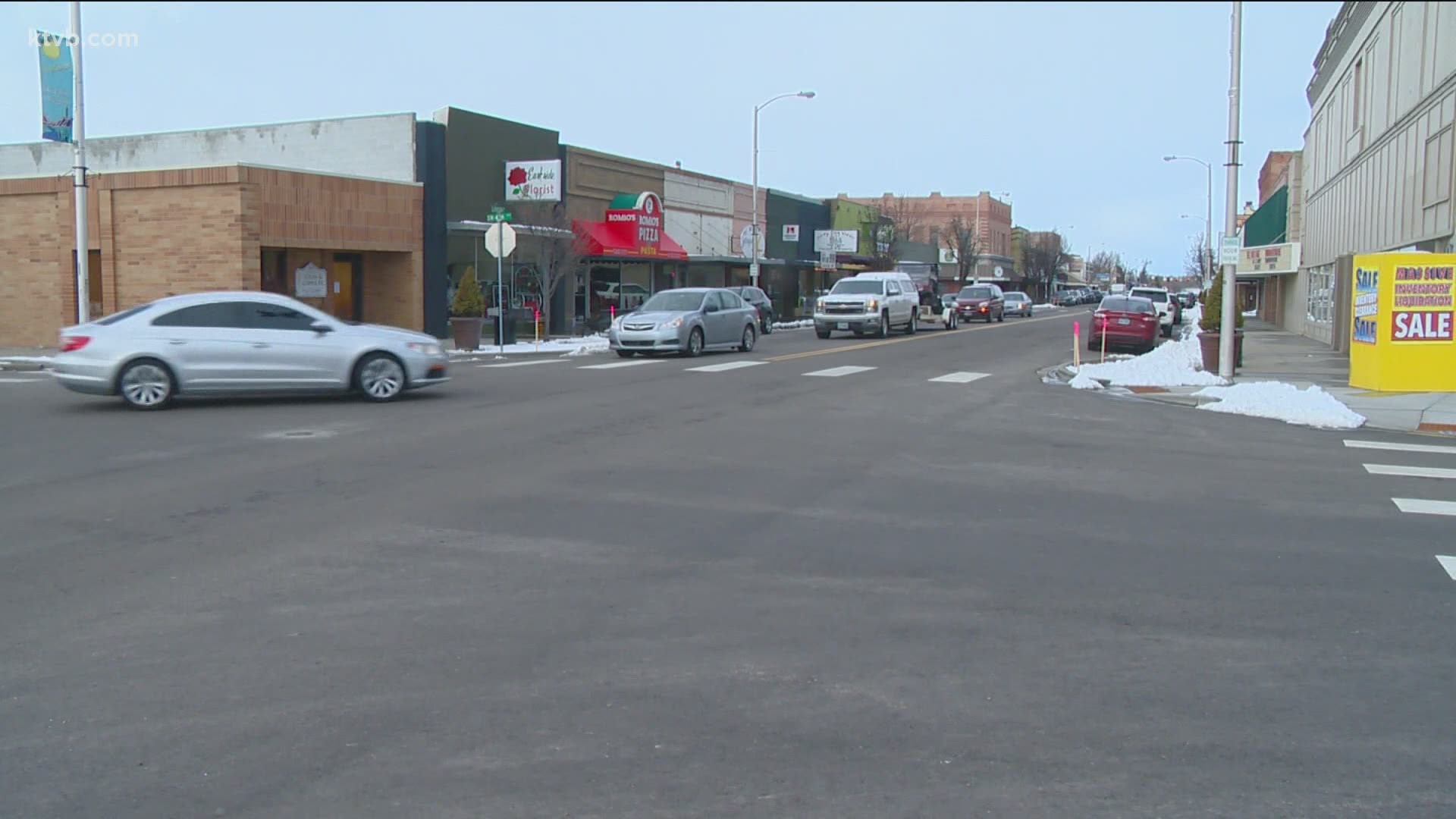BOISE, Idaho — Nearly everyone in Malheur County is now eligible for the COVID-19 vaccine. This week, the Governor’s Office approved a Malheur County request to expand the eligibility within the county.
Now, people who are eligible include frontline workers, people living in multi-generational households, anyone age 16 and older with an underlying health condition, and those people from previous eligible groups.
The county made the request to the Governor’s Office in mid-March.
“We want to use the vaccine that we have allocated to us and get it into arms each week,” Malheur County Health Department Director Sarah Poe said. “We wanted to get more people eligible, so they’re protected.”
The county was seeing the number of people slowing down in going to the vaccine clinics. Poe said other providers in the area were struggling to use all the doses they had.
This may be because there is more hesitancy in Malheur County since it is a small and rural county, according to Poe. Now, almost everyone is eligible for the vaccine.
“If you are under the age of 45, and you don’t live in multi-generational housing, you don’t have a front line job, and you don’t have an underlying health condition, and you don’t provide care to anyone else, then you wouldn’t be eligible for a vaccine,” Poe said.
The county also had two other requests in the letter they sent to the Governor’s Office. Those requests were not acknowledged. Poe said the state was going to take some time to get back to them on March 19 about those.
Those requests center around the COVID-19 metrics being used by the state to gauge the risk level in the county. According to OHA, counties with more than 30,000 people are considered a large county when it relates to COVID-19 metrics.
This means Malheur County’s risk level is based on the case rate of 100,000 people. This is what is used for all counties with over 30,000 people, including Multnomah County, where Portland is.
“That does feel unfair,” Poe said. “Because the reason why smaller counties were not put into that rate category is because such a small number would so significantly increase their rate.”
According to a chart from the Governor’s Office, in order to be in the minimal spread or at the low-risk level, counties must have a smaller case rate than 50 per 100,000 over 14 days. In the latest reporting period between March 14 through March 27, Malheur’s case rate increased slightly from 56.2 to 62.4.
This places it at a moderate risk level. However, the only reason why Malheur County is in the large county category in the first place is because of the Snake River Correctional Institute. Poe said there are around 3,000 adults in custody at the state’s largest prison.
“The cases that are at SRCI are removed in consideration of our risk level,” Poe said. “So, we’ve asked their population also be removed from our general population.”
Malheur’s population is around 31,000 to 32,000, according to Poe. If those 3,000 adults were removed from the population, then the county would fall into the medium category, meaning it would have a different metric to determine the risk level.
The metric used on medium-size counties, which is a county with a population between 15,000 and 30,000, is the number of cases of COVID-19 needs to be below 30.
Over the last three reporting periods, Malheur County has fallen below that figure. Between Feb. 28 to March 13, the county recorded 22 cases. Over the following two weeks, it recorded 18. Then in the latest batch of data, it was 20.
“Even in the low-risk categories, there are still significant precautions in place,” Poe said.
For example, in moderate risk, restaurants cannot exceed 50% capacity or 100 people, whichever is smaller. There is also an 11:00 p.m. closing time on all bars, restaurants, breweries and wineries.
Parties are limited to six people per table inside, and outdoor dining is allowed with a capacity of 150 people.
In the low-risk category, restaurants still can’t exceed the 50% capacity, but up to 300 people can eat outside at one time and parties are limited to 8 people instead of 6. The closing time is also moved up one hour to midnight.
“It really isn’t just back to normal, or back to 2019,” Poe said.
The last request in the letter was asking the state to adopt the State Department of Education’s COVID-19 metrics they use for schools and in-person learning.
“The county case rate would be less than 200 cases per 100,000 in a two-week period, or less than 60 cases in a two-week period and a test positivity rate less than 10%,” Poe said. “That is considerably less restrictive than the Governor’s metrics for counties overall.”
Poe did tell KTVB that the fact the Governor’s Office hasn’t responded to their requests may mean something is coming down the pipe.
“The times that they are not as quick to respond often times it’s because a change is coming that is statewide,” Poe said.
She added she thinks they should make a statewide change because of increased immunity due to more and more people being vaccinated and the risk of community spread is lower for that reason.
KTVB did reach out to Governor Kate Brown’s office for a comment on this story. No one responded to our phone calls or email.

